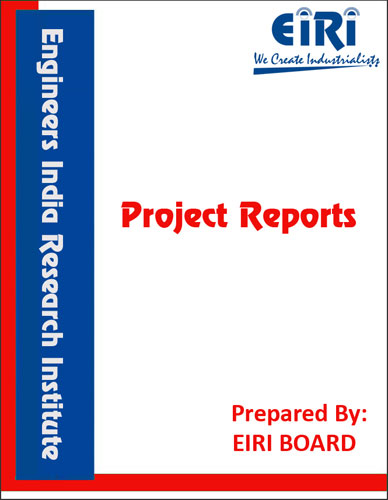SOLVENT FREE LAMINATION, SLITTING, REWINDING AND BAG MAKING
The project report includes Present Market Position and Expected Future Demand, Market Size, Statistics, Trends, SWOT Analysis and Forecasts. Report provides a comprehensive analysis from industry covering detailed reporting and evaluates the position of the industry by providing insights to the SWOT analysis of the industry.
We can prepare PROJECT REPORT as per your INVESTMENT PLAN for BANK LOAN REQUIREMENT and INDUSTRY ANALYSIS. All reports are prepared by highly qualified consultants and verified by a panel of experts.
Have Query? Click Here to Chat
Industry Expert is Online, Chat with him for more detail.

A pouch is similar to a bag except it is simpler in constructions and is made from roll stock, filled and sealed on automatic high speed machinery. There are many possible variations of pouch sizes, shapes and compositions. Few general types can be described.
Pouches can be defined as vertical or horizontal, depending on how they are formed. Vertical pouches are made by drawing one or two webs downward a forming mandrel, sealing one or two seats to form a tube and adding a top and bottom seal for closure than one side seal is used and centured, it is called a pillow type. If the side seal is inserted on one side and a fold on the other, it is called a three side seal pouch. When two side seals are used it is called a four side seal poucher firm-sealed pouch.
The product is added while the pouch is in the vertical position and usually before it is reserved from the web. Side seams can be lapped or butted and qussets are optional.
Horizontal pouches are made by drawing one or to webs in a horizontal direction. Usually when two webs in a horizontal are fed they are positioned in the horizontal plane and formed into a four-side sealed pouch. The product is added beofre the top web is sealed in place frequently the bottom web is formed into a packed. When a single web is fed, it is usually drawn only a plough to fold it in to the vertical plane. The bottom may be sealed or left unsealed side scals are made and the package is filled through the top, usually after being sewred from the web. Again gussets are optional.
When packing small items, frequently the individual poucher are not separated but left in a continuous strip. perforations or notches are inserted so that individual packets can be turn off as desired. Odd-shaped pouches can be formed by using coutoured heat seal jaws.
Tetrahedral pouches are made by forming a tube on a vertical form and fill machine and inserting cross seals alternately at 90o angles to the proceeding cross seal. The tetrahedron uses the least amount of material for a given pouches volume.
INTRODUCTION
ROTOGRAVURE PRINTING
GRAVURE PLATE MAKING AND CYLINDER MAKING
USES AND APPLICATIONS
EXAMPLES OF TYPICAL SPECIFICATIONS AND APPLICATION
PROPERTIES
B.I.S. SPECIFICATION
PROCEDURE FOR TYPE/PRODUCTAPPROVAL
VIBRATION LEAKAGE TEST
STACK LOAD TEST
DROP TEST
TEST FOR INKADHESION OFPRINTEDPOUCHES
OVERVIEW OF FLEXIBLE PACKAGING
MANUFACTURING PROCESS
PROCESS FLOW DIAGRAM
SOLVENT FREE LAMINATION PROCESS
PROCESS IN DETAILS
MARKET SURVEY
EXPORT OF PRINTED FLEXIBLE LAMINATED POUCHES
MARKET SURVEY (GLOBAL)
TROUBLE SHOOTING IN LAMINATION
PLANT LAYOUT
PRINCIPLES OF PLANT LAYOUT
PLANT LOCATION FACTORS
EXPLANATION OF TERMS USED IN THE PROJECT REPORT
PROJECT IMPLEMENTATION SCHEDULES
SUPPLIERS OF RAW MATERIALS
SUPPLIERS OF PLANT AND MACHINERIES
APPENDIX – A :
1. COST OF PLANT ECONOMICS
2. LAND & BUILDING
3. PLANT AND MACHINERY
4. FIXED CAPITAL INVESTMENT
5. RAW MATERIAL
6. SALARY AND WAGES
7. UTILITIES AND OVERHEADS
8. TOTAL WORKING CAPITAL
9. COST OF PRODUCTION
10. PROFITABILITY ANALYSIS
11. BREAK EVEN POINT
12. RESOURCES OF FINANCE
13. INTEREST CHART
14. DEPRECIATION CHART
15. CASH FLOW STATEMENT
16. PROJECTED BALANCE SHEET



